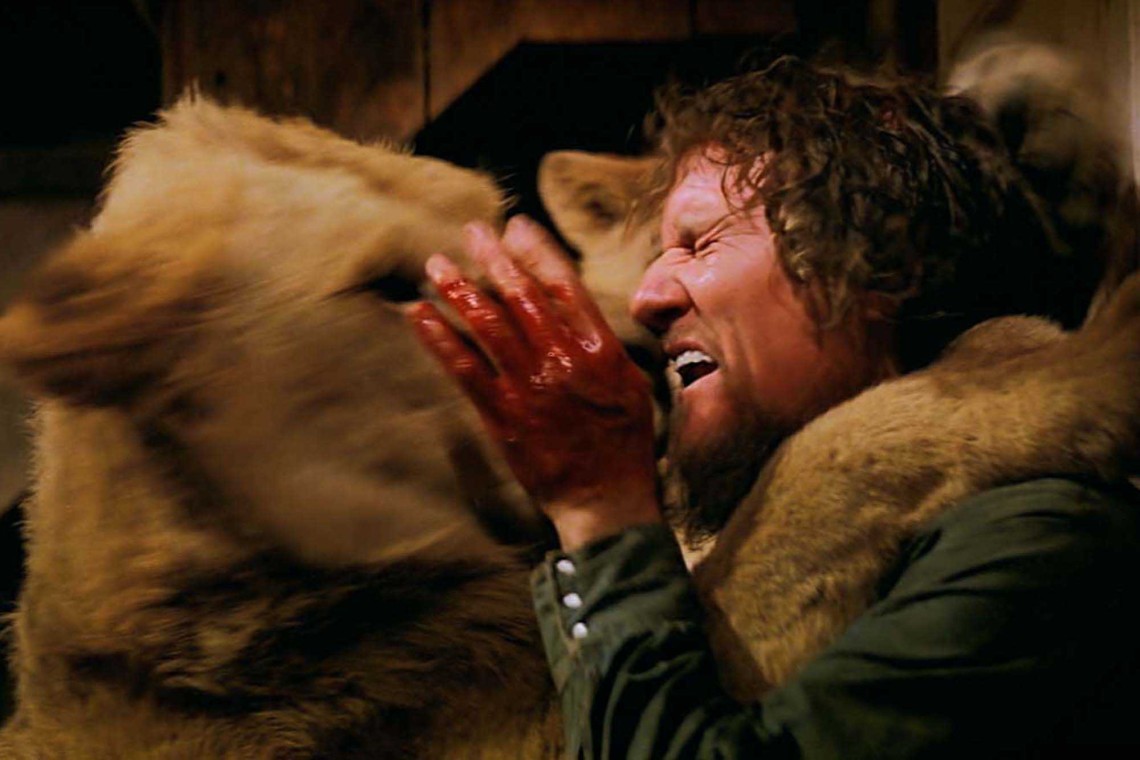“No animals were harmed in the making of this film. 70 members of the cast and crew were.” So beams the promotional copy for Drafthouse Films’ recent dustbin rescue of Noel Marshall’s 1981 expensive boondoggle Roar, an animals-run-amok disaster picture with actual animals and a worryingly real sense of impending disaster. A troubled movie made with can-do spirit and earnest physical commitment on the part of both cast and crew, the largely forgotten Roar couldn’t ask for a better marketing hook some 34 years after its failure to recoup more than a fraction of its budget. That tag, emblazoned over the posters and embedded in the trailer, is a sly provocation to take in the fruits of a dangerous production from the geographic and aesthetic distance of one’s local rep house, transforming it in the process into a kind of declawed snuff film. And if the primed crowd with whom I recently screened the film at Toronto’s Royal Cinema is any indication, it’s a dare people want to take.
Whatever the hook that gets you to buy a ticket for a film like Roar, it doesn’t necessarily prepare you for the actual film, whose strange mix of guilelessness and compromised staging make it difficult to wrangle into a retroactive joke at the filmmakers’ expense. It’s tempting but a bit too easy to dismiss Marshall out of hand for the disjunct between his ambition and his filmmaking talent, and to locate Roar’s worth mostly in its ironic appropriation as a strange lost object from the 1980s. The Exorcist producer had no directing credits to his name before embarking on the ill-advised project, a pre-Jurassic Park adventure thriller about the simultaneous beauty and terror of nature. Marshall’s missed marks in Roar, though, aren’t merely those of an inexperienced director: they’re also the failings of an overtaxed patriarch, animal wrangler, and manager of a small, precarious wildlife preserve. Those limitations stretch Roar to the brink of the unwatchable, as the director is forced over and over to run onscreen interference between animals and cast members (read: employees) in the guise of the film’s blank hero, where each intervention is more uncomfortable than the last.
The plot, such as it is, features Marshall as Hank, a wildlife preservationist living in what we are supposed to read as harmonious balance with a Noah’s Ark full of lions, tigers, elephants, and more. (Marshall is not much of an actor, but he does an admirable job downplaying his discomfort as the cats gnaw on his face, cheerfully reassuring his cast and audience, in character, that they’re “just playing.”) Inspired by a stint in Africa with partner Tippi Hedren, where the couple took in the sight of a plantation swamped with wild cats, Marshall adopted his own pride back in Beverley Hills, relocating to a ranch north of Los Angeles when their numbers swelled to unmanageable proportions. That exodus planted the seed for Roar, which finds Hedren, the couple’s teen daughter Melanie Griffith, and her blonde, burly brothers visiting their long-absent dad at work, at great personal cost to the whole family.
Marshall seems to be after a few things here, and his failure to stick the landing on any of them is more a cause for anxious spectatorship than haughty laughter. Consider the film’s dopey but earnest argument for the preservation of wild animals, or its abortive narrative of intra-species strife, played out in a battle for tribal dominance between a good and a bad lion. Both strands are consistently undermined by the film’s uncooperative animal actors, their threatening presence before the quaking camera—courtesy of cinematographer Jan de Bont, scalped for his efforts in his unfortunate American debut—a rejoinder to the very idea of scripting the animal kingdom.
The elaborate action sequences are likewise undermined by Marshall’s more obstinate players. The family’s arrival at the preservation starts off as a decently executed screwball sequence, as the newcomers fend off successive waves of animal attacks on their way to safety. There’s a touch of Spielberg’s madcap finesse in the way Marshall forces Hedren, Griffith, and company up and down a steady procession of staircases and through a series of revolving doors (and cupboards, and barrels), away from the ever-encroaching lions. Marshall is successful at mining this attack and retreat formula until suddenly he isn’t—the real animals’ proximity to the real, vulnerable bodies of cast and family members causing the camerawork and cutting to once again become furtive and spatially unmoored. It’s as if Roar cannot quite get started whenever its ludicrous premise—of throwing untrained animals and unprotected humans together in shared space—kicks into high gear.
Roar is the compelling watch its second-run ads promise, then, and it’s every bit the historical curio Drafthouse is selling, if not for the budget than for the enormous stitches allocation it occasioned—220 for de Bont alone. And its chief selling point may well be Marshall’s folly in endangering his cast, crew, and family. Yet it’s a struggle to see the film in precisely the way it’s been positioned—to glibly enjoy its litany of maimings and clawings 30 years removed from the action and safely nestled in a theater. If the ads are selling danger repackaged through ironic distance as safety, Roar still begs to be read against the grain as an unsettlingly immediate, incoherent art object—a fascinating record of a film in the process of its own high-concept unmaking.

















